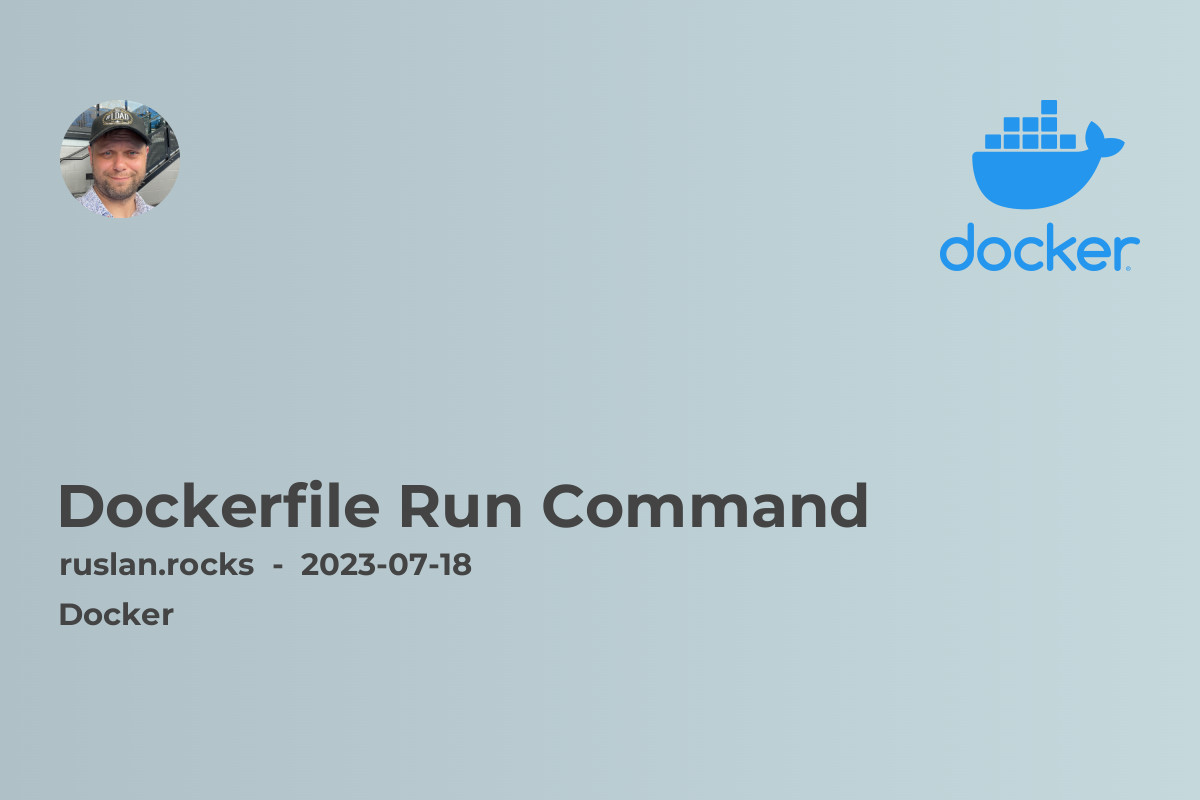- Understanding the RUN Command
- Basic Syntax of the RUN Command
- Installing Packages with the RUN Command
- Running Scripts with the RUN Command
- Best Practices for Using the RUN Command

The Dockerfile RUN command plays a crucial role in building efficient and reproducible Docker images. In this article, we will dive deep into the usage and best practices of the RUN command, exploring its syntax, options, and common scenarios. Whether you're a beginner or an experienced Docker user, this guide will provide you with valuable insights to enhance your Dockerfile workflows.
Understanding the RUN Command
The RUN command is used to execute commands and run scripts within a Docker image during the image build process. It enables you to install packages, set up dependencies, and configure the environment inside the image. The resulting image captures the state of the containerized application, making it easy to reproduce and deploy consistently across different environments.
Basic Syntax of the RUN Command
The basic syntax of the RUN command is as follows:
RUN <command>
Here, <command> represents the shell command or script that you want to execute. It can be any valid shell command, such as installing packages, running scripts, or setting environment variables.
Let's explore a few examples to demonstrate the usage of the RUN command.
Installing Packages with the RUN Command
One of the most common use cases for the RUN command is installing packages inside the Docker image. For example, to install Node.js and npm, you can use the following command in your Dockerfile:
RUN apt-get update && apt-get install -y nodejs npm
This command updates the package repositories and installs Node.js and npm into the image. The -y flag answers "yes" to any prompts during the installation process, ensuring a smooth installation.
Running Scripts with the RUN Command
Aside from installing packages, you can also run scripts inside the Docker image. This is useful for executing complex setup tasks or configuring the environment. Here's an example of running a script:
RUN chmod +x /path/to/script.sh && /path/to/script.sh
In this example, we set the executable permission on the script using the chmod command, and then we execute the script using its relative path. This allows you to automate various tasks within the image, such as configuring your application or setting up a database.
Best Practices for Using the RUN Command
To maximize the efficiency and maintainability of your Dockerfile, it's essential to follow some best practices when using the RUN command. Here are a few tips to consider:
- Combine Multiple Commands: Whenever possible, combine multiple commands into a single RUN instruction to minimize the number of layers in the resulting image. This reduces the image size and improves the build time.
- Use && Operator: Use the
&&operator to chain multiple commands together. This ensures that the next command is executed only if the previous one succeeds. For example:
RUN apt-get update && apt-get install -y package1 package2
- Clean Up After Installation: After installing packages, clean up any unnecessary files or dependencies to reduce the image size. Use the
apt-get cleancommand or the appropriate package manager command for your base image. - Leverage Caching: Docker cache plays a significant role in speeding up the image build process. When using the RUN command, consider the order of commands to leverage caching effectively. Place commands that change less frequently higher in the Dockerfile to take advantage of cached layers.
- Use Official Base Images: Whenever possible, use official base images provided by the Docker community or trusted sources. These images are well-maintained, regularly updated, and optimized for performance.
Now that we've covered the basics of the RUN command and explored some best practices, let's delve into some related topics for further learning:
- Dockerfile Copy: Simplifying Container Image Creation
- Docker Build: Simplifying Container Deployment
- Docker Images List: Managing Images with Ease
- Docker Volumes: Managing Data in Containers
- Dockerfile Entrypoint: Configuring Container Startup
These articles will provide you with additional insights into container image creation, deployment, and data management with Docker.
In conclusion, the Dockerfile RUN command is a powerful tool that simplifies the process of building Docker images. By understanding its syntax, best practices, and related concepts, you can optimize your Dockerfile workflows and create efficient and reproducible containerized applications.
Remember to experiment, explore the official Docker documentation, and stay up-to-date with the latest Docker enhancements to make the most of the RUN command's capabilities. Happy Dockerizing!

